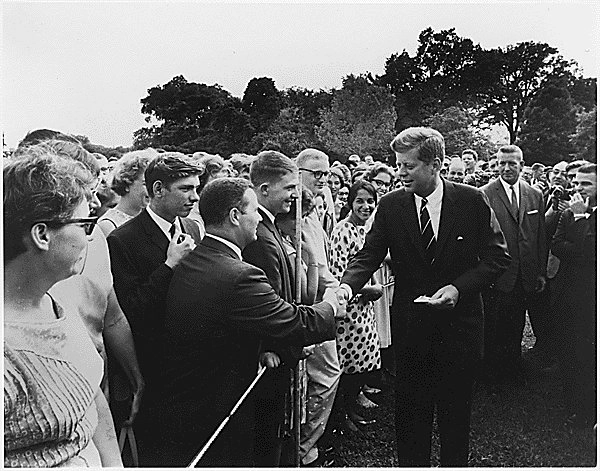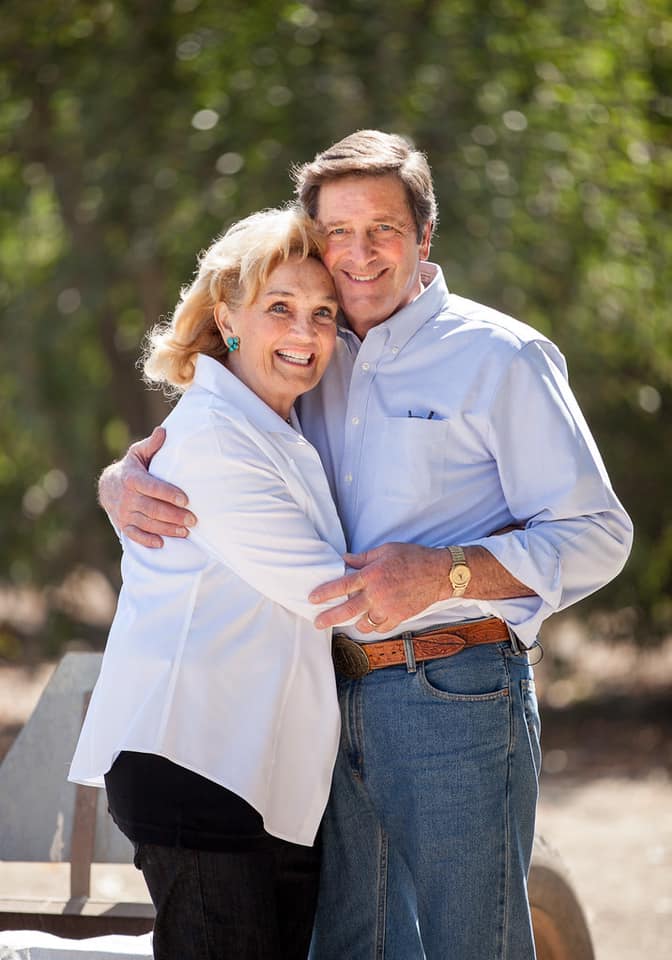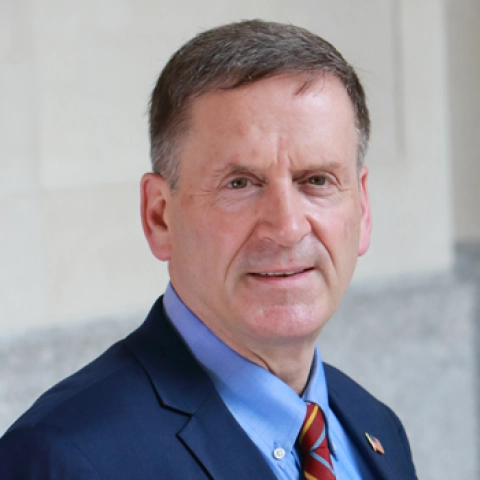Where Have all the Peace Corps Volunteers Gone?
Where Have all the Peace Corps Volunteers Gone?

I often trace the beginnings of my foreign policy and international development work back to the village school in Kenya where my wife Sue and I served as WorldTeach volunteers. That work presented many challenges, but the village was also ahead of many others in the area because a Peace Corps Volunteer served there before us. I often point to my time as US ambassador to Tanzania as the high point of my career in foreign policy. When I entered the State House to present my credentials to President Jakaya Kikwete in 2007, a Tanzanian protocol officer proudly took me aside and related how he had once been taught by a Peace Corps Volunteer.
When President John F. Kennedy established the Peace Corps in early 1961, he saw it as what we Americans colloquially refer to as a “two-for.” He believed that it would not only help developing countries meet their desperate need for skilled workers, but it would, as Peace Corps materials say, “bridge the cultural divide” between Americans and the rest of the world. Since Volunteers would largely serve in rural communities and remote regions, they would extend the “American brand” to places that traditional diplomacy couldn’t reach.
Like his framing of the “space race,” JFK framed the Peace Corps as a national mission. An American purpose.
“For every young American who participates in the Peace Corps—who works in a foreign land—will know that he or she is sharing in the great common task of bringing to man that decent way of life which is the foundation of freedom and a condition of peace.”
That appeal to young Americans worked. Within five years of its founding, more than 15,000 Volunteers were serving in 52 countries. With each passing year, the Peace Corps refined the roles that Volunteers would play, going from teachers and rural development workers to playing important roles in some of America’s best known development initiatives—programs like the President’s Emergency Plan for AIDS Relief (PEPFAR), the President’s Malaria Initiative (through Stomp Out Malaria in Africa or “STOMP”), and Feed the Future. In 2023 alone, despite still emerging from the COVID-driven suspension of most community-based programs, the Peace Corps educated more than 65,000 people on HIV prevention, planted 41,000 trees, provided basic education to over 10,000 students, trained approximately 2,200 individuals on entrepreneurship, and much more. In each community they touch, the work of Volunteers has boosted America’s image, not only through their work product, but the values and ideals they represent.
What JFK didn’t realize—couldn’t have realized—was how many Volunteers would go on to serve key roles in American public life. Returned Peace Corps Volunteers (as former Volunteers call themselves) have gone on to be cabinet secretaries, like Donna Shalala; governors, like Ohio’s Bob Taft; activists, like Carl Pope, the former executive director of the Sierra Club; diplomats, like Ambassadors Christopher Hill, Pam White, and Christopher Stevens; development leaders, like former USAID Administrator Peter McPherson and UNESCO’s Carol Bellamy; authors, like Paul Theroux; US senators, like Christopher Dodd and Paul Tsongas; and members of the House of Representatives, like Tom Petri, Tony Hall, and Christopher Shays. Returned Peace Corps Volunteers have often gone on to be corporate leaders as well (like Reed Hastings, the founder of Netflix, and Bob Haas, Chair Emeritus of Levi Strauss). In 2019, USAID estimated that over 400 of its staff members were returned Volunteers. All told, there are 240,000 former Volunteers who have not only met JFK’s call to bring a “decent way of life” to distant communities around the world, but upon their return, have strengthened America’s communities and way of life too.
The reality is, however, that the number of Peace Corps Volunteers and those applying to be Volunteers is smaller than it was in earlier years. In 1966, there were more than 15,000 Volunteers actively serving. As of September 2023, only 2,354 Volunteers were working in 53 countries. Some of this is clearly due to the uncertainties created by the COVID pandemic, as agency leaders couldn’t say for certain when and where the next class of Volunteers would be serving. But there are simply fewer people applying and it has become harder for the Peace Corps to meet the demand that many countries have expressed. One way to quantify the thinning ranks of Volunteers is to look at the agency itself. Historically, returned Peace Corps Volunteers have made up a large part of the organization’s Washington, DC staff. In 2023, the agency reported a vacancy rate of 19.6%, up from 12.9% in 2021 during the pandemic’s peak.
My time as a WorldTeach volunteer is a huge part of my life—a huge part of who I am, both professionally and personally. Yes, it whetted my appetite for international development and foreign policy. But it also taught Sue and I invaluable lessons about how to distinguish what seems to be important from what really is. It taught us self-reliance, creativity, and the value of hard work. I pitch public service in general, and the Peace Corps in particular, every chance I get.
 Strikingly, Congressman John Garamendi is the only sitting Member of Congress who served as a Peace Corps Volunteer. He and his wife, Patricia, were Peace Corps teachers in Ethiopia from 1966 to 1968. They taught 7th and 8th graders in their community and worked alongside community leaders making a range of services and resources available to area families. John is a fierce advocate for the Peace Corps and a strong voice for recruiting others to become Volunteers. And he’s quick to say that he wouldn’t be who he is without the experience that he and wife had all those years ago in the Horn of Africa. As John puts it, “My wife Patti and I owe so much to our service in the Peace Corps. It inspired a lifetime of public service.”
Strikingly, Congressman John Garamendi is the only sitting Member of Congress who served as a Peace Corps Volunteer. He and his wife, Patricia, were Peace Corps teachers in Ethiopia from 1966 to 1968. They taught 7th and 8th graders in their community and worked alongside community leaders making a range of services and resources available to area families. John is a fierce advocate for the Peace Corps and a strong voice for recruiting others to become Volunteers. And he’s quick to say that he wouldn’t be who he is without the experience that he and wife had all those years ago in the Horn of Africa. As John puts it, “My wife Patti and I owe so much to our service in the Peace Corps. It inspired a lifetime of public service.”
There’s so much talk these days about the need to extend the reach of American soft power and to project American values in the era of “Great Power Competition.” We need the next US president to reaffirm JFK’s call for Americans to sign up for the “toughest job you’ll ever love” (as a Peace Corps advertising campaign once termed it). We need to double and triple the ranks of Volunteers for their sake, for the world’s sake, for OUR sake.

Ambassador Mark Green (ret.) is President and CEO of The Wilson Center
I’m right here, enjoying Bret Baier’s impression of Zach Galifiankis’ Between Two Ferns. What a card! Who says Fox has no sense of humor.
Ambassador Green, great piece. PC needs leaders like you. Return to basics when people were recruited to serve and when PCVs were trusted by staff. Cross-cultural learning and sharing is essential in our world where great things happen when people work side by side in tough circumstances.
Will Newman
PCV in Nepal, 1963-65
Dear Ambassador Green:
Great thanks for your comments. Perhaps it can be said that while the world has changed, has Peace Corps? From a population perspective, the global population was some 2.4 billion when Peace Corps entered the arena, and many African countries were on the verge of independence. Today, it is 8.7 billion and all of Africa is now in a post-colonial period, often with corrupt leaders, Civil War, tribal rivalries, and rampant greed. As one RPCV found when returning to Nigeria: “there are far too many educated people with too few prospects for meaningful employment”.
One RPCV’s experience in Colombia responds to this changing environment via her Marina Orth Foundation, starting in 1965 with a one room school house in an economically depressed rural area. She started with TEFL, then graduated her students to the use of computers, then on to IT, then onward to Robotics, etc., all to prepare them to be competitive a world that was changing via technology. The entry to this world was via TEFL, the key to future competitiveness in employment. Her Foundation now works in some 35 Colombian schools, and her work earned her a Colombian Citizenship.
If you look at all the non-state actors in the Middle East, like Hamas, et al, what choice do young men have but to be soldiers!
What do all those migrants crossing our Southern Borders want? A chance to get a job!! Is any government or non-government agency doing anything to help prepare them for a highly technical and competitive world as does the Orth Foundation?
Best wishes,
Jeremiah Norris
Colombia 1963-65
As President of Friends of the Dominican Republic (FDR), the National Peace Corps Association’s affiliate organization for that country, I can say that Peace Corps only left the Dominican Republic for the first time since 1962 when Covid hit the world but returned as soon as it was safe to do so. It was the 6th country to receive Volunteers in 1962 and more than 5000 Volunteers have served there since then. So, one answer to your question is that new Volunteers have returned to the Dominican Republic and are serving there today, working with the Dominican people on economic development and other projects. In addition, our organization, FDR, and another organization of former DR Volunteers, Fondo Quisqueya (FQ), are also supporting programs in the Dominican Republic that are benefitting their citizens by working with current Volunteers and other Non-Government Organizations and the Dominican Government. While there may not be as many Volunteers in the field at the current time as we would all like to see, there are many Returned Peace Corps Volunteers (RPCVs) that are still serving the countries where they served through organizations like ours. I do agree with you, however, that Peace Corps and all of us could do more.
This is the first article I have read in many years giving an update on the Peace Corps. I am
a former volunteer in Honduras (84-86) and just submitted an article to Tico Times looking back on history there. I am wondering how could the Peace Corps operate effectuvely anymore amidst the massive macroeconomic
forces of narco trade, and the gargantuan influence of the global access to the internet. I mean almost everyone is compartively well- informed these days, and economic aspirations are universal. It is the disparity of wealth and economies among nations, i.e. good jobs , that are key in determining people’s quality of life.